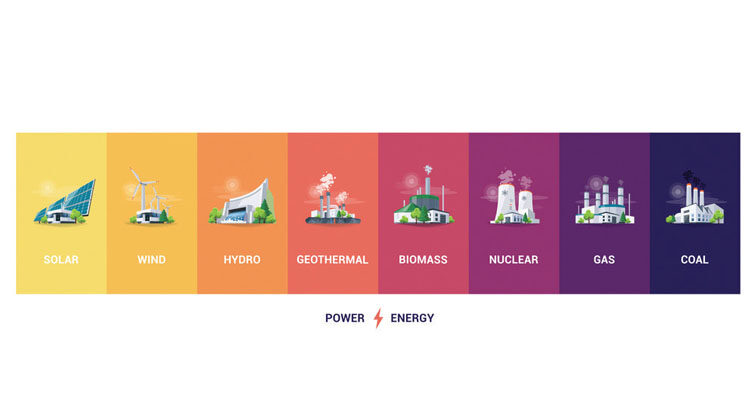India will achieve net-zero clean energy targets by 2070
By EPR Magazine Editorial September 2, 2022 5:12 pm IST
By EPR Magazine Editorial September 2, 2022 5:12 pm IST

The Indian government has declared that the country will have net-zero carbon dioxide emissions by 2070. The country is one of the largest CO2 emitters, or GA green gas emitters, responsible for climate change. With a large population, India is the third largestCO2 emitter after the US and China. There are 2.8 giga tonnes ofCO2 emissions per year. Twenty-six negotiation conferences with international organisations were recently held to finance climate change mitigation plans, such as simple and affordable technological solutions.
To be net-zero, a country needs to have both positive emissions and good forest cover to absorb the CO2 emissions. Of total emissions, 68 percent to 69 percent of missions come from the energy sector, followed by the agriculture sector at 19 percent, the industrial sector at 6 percent, and land use and forestry at 3.8 percent. Notably, the highest carbon emissions are from developed countries, where the per capita energy consumption is very high, which is further linked to the Human
development Index (HDI), the standard index formulated by the UN.
Improving Energy Efficiency
To reduce energy efficiency, one has to adhere to an energy efficiency programme for a high energy-consuming industry called the Performance Act, and trade is the key backup. Certification for energy efficiency and star rating through the Bureau of Energy is available. We now have energy-efficient devices or equipment such as refrigerators, air conditioners, and ceiling fans that use little energy.
Carbon Capture Utilisation and Storage (CCUS)
CCUS is the latest technology on the rise as countries worldwide strive to reduce emissions from the energy industry. The technology involves capturing, transporting, and storing greenhouse gases on the ground. The technology can unlock the full potential of decarbonisation and attain net zero emissions. But though one is storing carbon dioxide in oil wells or underground storage in deep mines, there is a chance that it may come up later on. So, the second option is to use carbon dioxide and convert it into valuable pills or other chemicals, but those technologies are still expensive. So, there is a limit to which we can use conventional energy and, simultaneously, reduce our emissions.
Other Renewable Energy Resources
There is a vast amount of renewable energy available. If there were wise and efficient use, the energy transition would be very smooth and impactful. The other renewable resources are wind, solar, and hydro biomass. There is also less known ocean energy that can be utilised.

Trends in electricity utilisation/energy transition
Electricity is now used for purposes other than those traditionally associated with it. Electric vehicles are a big revolution waiting to happen in the coming decade. These vehicles will soon replace petrol and diesel vehicles, thus only renewable-driven electric vehicles in the future.
Biomass fuel production Apart from electricityHydrogen as an energy resource
Hydrogen can be stored in energy or chemical form in an industrial process that replaces carbon. Specifically, hydrogen can be used instead of carbon in the steel-making process. Currently, the country generates 6.8 billion tonnes of hydrogen, primarily used in refineries to remove sulphur from gasoline and diesel.
Government Initiatives
Recently, the government has announced schemes and focused on a political front or as a commitment. The government is pushing it forward to empower the renewable energy sector. It has created a conducive environment and a regulatory framework in an environment inviting investments from the technological and industrial sectors. Earlier, the schemes pertained to only long-term projects for power purchase agreements between the generators and the distribution companies. The government has now
opened these markets on a trading basis. They have introduced a special scheme for allowing market access. This unique renewable or green energy scheme has opened up different market segments for power exchange. To meet the government’s ever-increasing demand for 500 gigatonnes of renewable energy by 2030.
India has an installed capacity of 403 gigawatts, out of which 120 gigawatts are renewable, constituting 30 per cent of total energy. It is estimated that our renewables will grow exponentially in the next eight years. At the same time, the growth of conventional power plants such as coal, natural gas, and diesel is less than that of renewables such as solar wind, hydro, and offshore wind.
The government has announced special incentives for using renewable power for green hydrogen and green ammonia generation called the renewable hydrogen or green hydrogen policy. According to the researcher, hydrogen demand is expected to increase by 2050.
Thus, renewable energy is no more isolated social work happening in some remote areas. It would soon be part of the everyday routine of both the industrial and agricultural sectors. This renewable energy source will benefit everyone without harming the environment or humankind.
The Energy Resource Institute (TERI), the energy and resource institute, has started carbon trading for every person with agricultural land. Wherein farmers can plant trees along the borders of the farm and can get carbon credits. This step ensures increased forestation and energy plantations and additional income to partners.
We use cookies to personalize your experience. By continuing to visit this website you agree to our Terms & Conditions, Privacy Policy and Cookie Policy.